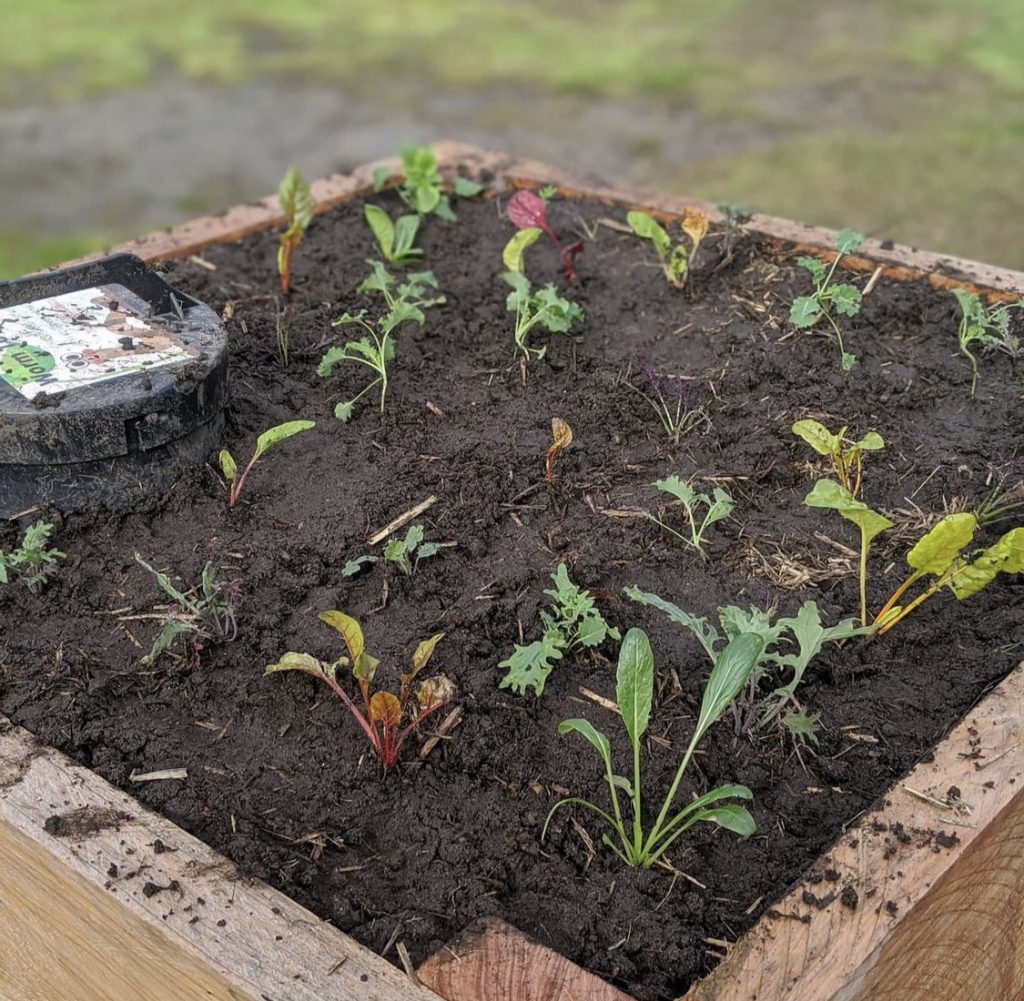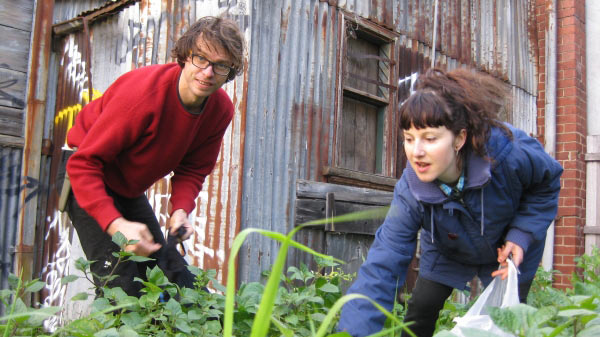Rainbow chard, kale and mibuna freshly planted at HH Skinner Reserve Community Garden in Albert Park.
What to plant and do in the Melbourne garden this month
What to plant in May
With the changing of the seasons, our advice remains much the same as for April.
- Veggies: You can still plant cabbage, Asian greens like mizuna, mibuna, tatsoi or pak choi, lettuce, rocket, spinach, carrots, celery, cauliflower, spring onions, leek, onions, radish, turnips and swedes. You can also plant peas of all varieties and broad beans.
- Herbs: Parsley is an amazing plant for remaining productive in winter, even in part-shade. All the perennial herbs can be planted like rosemary, oregano and thyme (all liking a hot area) and mints.
- Companions and flowers: Add some colour to your garden bed and salad, attract beneficial insects, and suppress disease with some flowering plants. Some multipurpose flowers (most, not all, edible) include cornflower, calendula, pansies, viola, nasturtium, yarrow, daisies including feverfew and chamomile, and marigolds.
- Green manures: If your soil has been a little overworked, rest it with some ‘green manure’ crops, who’s express purpose is to be turned into the soil come spring. At this time of year try broad bean (buy them in bulk as fava beans from Middle Eastern groceries), lupins, vetch, field pea, oats and wheat.
Fertilising, mulching and watering
- If there are any remaining defeated of the summer veggies, it’s time to pull them out. When you pull out the veggies — and weeds in between — don’t let those wonderful nutrients leave your system. Chuck anything other than diseased plants into the compost.
- Deciduous trees are loosing their leaves! Sweep them up in bags from street trees for the year’s mulching.
- About 3-5cm is a good amount for most mulches. Make sure to pull it away from the trunks of plants and small seedlings to keep them dry.
- There’s no longer as much need to water as much as in summer, so water only when needed. If you’re a customer with an automated tap timer, consider turning the tap off after rain, and turning it back on in dry spells.
Pest control
- Brassicas (the cabbage family) are having a hard time of it in a lot of gardens at the moment, with Cabbage White Butterfly caterpillars — they are well camouflaged green. Aphids (tiny green sap suckers) are also taking a toll. If you have lots of the companion plants mentioned above, and maybe some trees bringing sparrows and other insect eating birds into your yard you may be experiencing no problems. If are having problems consider the following:
- For Cabbage White Butterfly you can simply remove the caterpillars and the eggs especially from young plants. As we go into colder weather the butterflies will disappear and you shouldn’t need to do it again. Parasitic wasps also help control the caterpillars (my backyard is buzzing with these tiny saviours of vegie patch right now). The eggs are tiny yellow ovals found underneath the leaves. If squishing bugs is too much for you, you can spray Dipel or equivalent — organically approved bacteria based control.
- Aphids have a lot of natural enemies: ladybirds, lacewings, hoverflies, and the ever-present parasitic wasps. But they can nevertheless get out of control. A lot of the time simple methods such as a jet of hose water will keep them in control until predator populations build up. You can mix chilli, garlic and soapy water to make a spray.
Plan your future garden
If you want to grow food but haven’t got your own garden yet, now is a great time to install and plant a garden. Not sure where to start? We can help you with customised DIY sustainable timber raised garden bed and wicking bed kits to suit your garden, or we can install any of these options for you.
Photo by South Melbourne Sustainability Group




